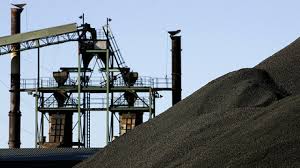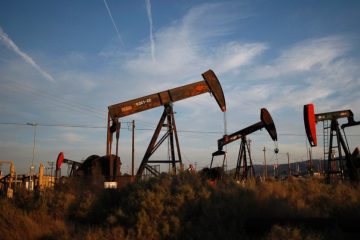Coal, gas lead 2022 commodities rally; recession fears greet New Year

Coal and natural gas markets were poised on Friday to end 2022 with strong gains after a global energy crisis triggered by the Russia-Ukraine war stoked a sharp upswing in prices, while tighter supplies expected in 2023 could fuel more gains.
Industrial metals, iron ore and rubber are on track to finish in negative territory, pushed down in 2022 by China’s strict zero-COVID policy and fears of a world recession.
Agricultural markets, including grains and palm oil, jumped to all-time highs in March on adverse weather and pandemic-related supply disruptions, triggering food inflation, but those commodities gave up much of their gains in the second half.
“Despite the recent price declines, commodities will still likely finish the year as the best performing asset class…,” Goldman Sachs said in its 2023 commodity outlook.
Power-generation fuels – coal, natural gas and gasoil – outperform other energy products in 2022 following cut in Russian energy supplies to Europe
Because Europe will continue importing LNG to rebuild gas inventories next year after winter, gas prices are expected to remain elevated amid limited new supplies coming on-stream.
Dismantling of tight pandemic controls in China, the world’s second-largest LNG importer, could also promote economic recovery and greater LNG consumption next year.
However, a European cap on gas prices starting in February could help keep a lid on the market and reduce the volatility seen this year.
Oil prices are on track for a second annual gain, with Brent up almost 6% and U.S. crude rising nearly 5%.
As for industrial metals, three-month copper on the London Metal Exchange has dropped more than 13% in 2022 and aluminium is down about 15%, even though both metals reached record highs in March.
Nickel is the best performer among metals in 2022 while China’s zero-COVID measures dampened demand for other industrial metals
Spot prices of iron ore bound for China , which consumes about two-thirds of global supply, have fallen about 5% this year, ending near $115 per tonne.
Citi analysts are bearish on nickel and zinc for the next six to 12 months, seeing strong supply growth, while they are bullish on iron ore and aluminium.
“Iron ore is expected to remain strong in the near term and could follow through in the bull case of a major China credit easing …,” they said in a note.
China’s U-turn on COVID policy and its pledge to increase support for the ailing real estate sector helped prop up prices of ferrous and non-ferrous metals in December.
Still, optimism has been tempered by the country’s surging COVID infections and a rising risk of global recession in 2023 if central banks, as expected, keep raising interest rates to curb inflation.
Nickel , the big outperformer in the metals segment, is on course for a 45% rise, its largest since 2010, partly due to a shortage of metal that can be delivered against the LME contract and partly because the market has been volatile since volumes shrank after a trading fiasco in March. read more
FOOD INFLATION
Benchmark Chicago wheat futures jumped to an all-time high of $13.63-1/2 a bushel in March because the invasion reduced supply from key grain exporter Ukraine to a global market already driven higher by adverse weather and COVID-19 related restrictions.
Corn and soybeans hit a decade high, while Malaysia’s benchmark crude palm oil prices climbed to an all-time record.
Going forward, food-commodity prices are likely to be supported, because wheat production is unlikely to replenish depleted world inventories, at least in the first half of 2023, while crops producing edible oils are suffering from adverse weather in Latin America and Southeast Asia.
“U.S. winter wheat is facing harsh cold weather and, even if the crop improves, we will have those supplies (only) in the second half of 2023,” said a Singapore-based trader at an international trading company.
The rice market, which sat out the rally in grain prices in the first half of the year, got a boost after India, the world’s biggest exporter, decided in September to curb supplies. India’s 5% broken parboiled rice is up almost 6% in 2022 and Vietnam’s 5% broken rice has gained more than 15%.
In the precious metals, gold has lost around 1% in 2022, down for a second year, silver is up almost 3%, platinum has gained 9% and palladium is down 4%.
Coffee is among the biggest losers, with robusta down 23% and arabica losing a quarter of its value.
Tokyo rubber has lost more than 7% while raw sugar up more than 7%. ICE cotton has dropped more than 26% in 2022.









